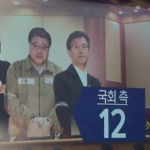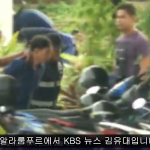26.02.2017.
KBS News
By Ee Seungjae
Video at link
 On December 9, last year, the National Assembly voted in favor of the impeachment proposal [against President Bak Geunhye] and submitted a final proposal to the Constitutional Court. At the end of the three days of preparations, the first day of the debate took place on the 3rd of last month, and discussions were held twice or three times every week for 55 days. The President’s defence has applied for 29 witnesses and the National Assembly [ie prosecution] has applied for 12 witnesses, including three witnesses who both sides sought to call as witnesses. Of these, 27 were called to the witness stand.
On December 9, last year, the National Assembly voted in favor of the impeachment proposal [against President Bak Geunhye] and submitted a final proposal to the Constitutional Court. At the end of the three days of preparations, the first day of the debate took place on the 3rd of last month, and discussions were held twice or three times every week for 55 days. The President’s defence has applied for 29 witnesses and the National Assembly [ie prosecution] has applied for 12 witnesses, including three witnesses who both sides sought to call as witnesses. Of these, 27 were called to the witness stand.
After the fierce closing arguments of both sides, the last remaining issue is the final defence tomorrow (27th), which begins at 2pm.
When the final defence is held, the presiding judges will briefly ask if additional evidence will be adopted before entering the final statement immediately afterwards. The President and the President of the National Assembly will appear on both sides of the podium to make a final statement regarding the impeachment of President Park. The National Assembly plans to call four representatives every 15 minutes.
During today’s proceedings Kwon Sungdong, chairman of the National Assembly’s impeachment committee, first explained why impeachment is necessary. Then, lawyer Hwang Jungkeun, the head of the general assembly of the National Assembly, gave a concrete reason for impeachment. When the National Assembly statement ends, the President will make her final statement. There is also a high possibility that one of the President’s lawyers, whether it is Seo Seonggu or Kim Pyeongu, will make statements too. The President’s lawyers say that they represent the President individually, and that they will talk about what they want to emphasise, without any time constraints.



